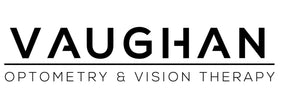Macular degeneration is a progressive disease that affects millions of Canadians. Macular degeneration destroys the macula of the eye, the area of the retina in charge of central vision. Macular degeneration affects the clear, 'straight-on' vision required for tasks such as reading, driving, and the recognition of faces. This guide will help you better comprehend this widespread disease.
Macular degeneration has a correlation with aging and is typically known as age-related macular degeneration (AMD). There are two types of AMD: dry (atrophic) and wet (neovascular). Dry AMD is associated with depositing waste material at the back of the eye called drusen. Wet AMD is caused by the growth of abnormal choroidal blood vessels that extend into the space underneath the macula and seeps fluids and blood into it. Wet AMD has a lower prevalence compared to the dry form of the disease, but causes more severe vision loss. Smoking and family history play a role in one’s chances of developing this disease.
Early and intermediate forms of AMD will often start with no symptoms at all. Only a comprehensive dilated eye examination will be able to detect it. Testing may comprise of taking visual acuity, OCT imaging, and using an Amsler Grid to track progression. AMD can cause straight lines and edges of objects to appear distorted or wavy.
There is no direct treatment for dry macular degeneration; however when caught early, disease progression can be slowed down. A diet of dark leafy green vegetables is recommended for those who have moderate dry AMD. This is because dark greens leaves contain lutein and zeaxanthin, two important antioxidants to combat the disease. For those who do not like vegetables, there are eye vitamins to be taken twice a day that contain the same antioxidants as these vegetables.
While macular degeneration poses a significant threat to vision health in our aging population, early detection plays a crucial role in managing this condition effectively. Comprehensive eye exams at Vaughan Optometry are paramount to detect early signs before significant vision loss occurs. For those diagnosed with the condition, consistent monitoring at our clinic by our optometrist is needed to assess the rate of progression. Only when dry AMD turns into the wet form does a patient get referred to an ophthalmologist for injections in the eye. A prompt referral will increase the chances of saving vision loss from wet AMD. Understanding macular degeneration helps us not only recognize its potential impact, but also in appreciating the necessity for routine eye care and timely treatment.
The information provided is for general information purposes only and not intended to replace professional care. Please consult a professional for advice and diagnoses so you can be properly treated for your specific situation.





